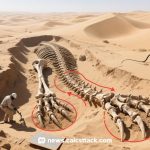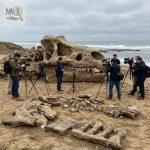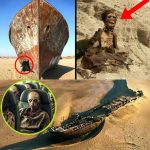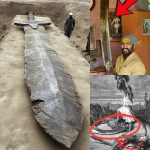Breaking: Colossal Fang Unearthed Beneath the Sands
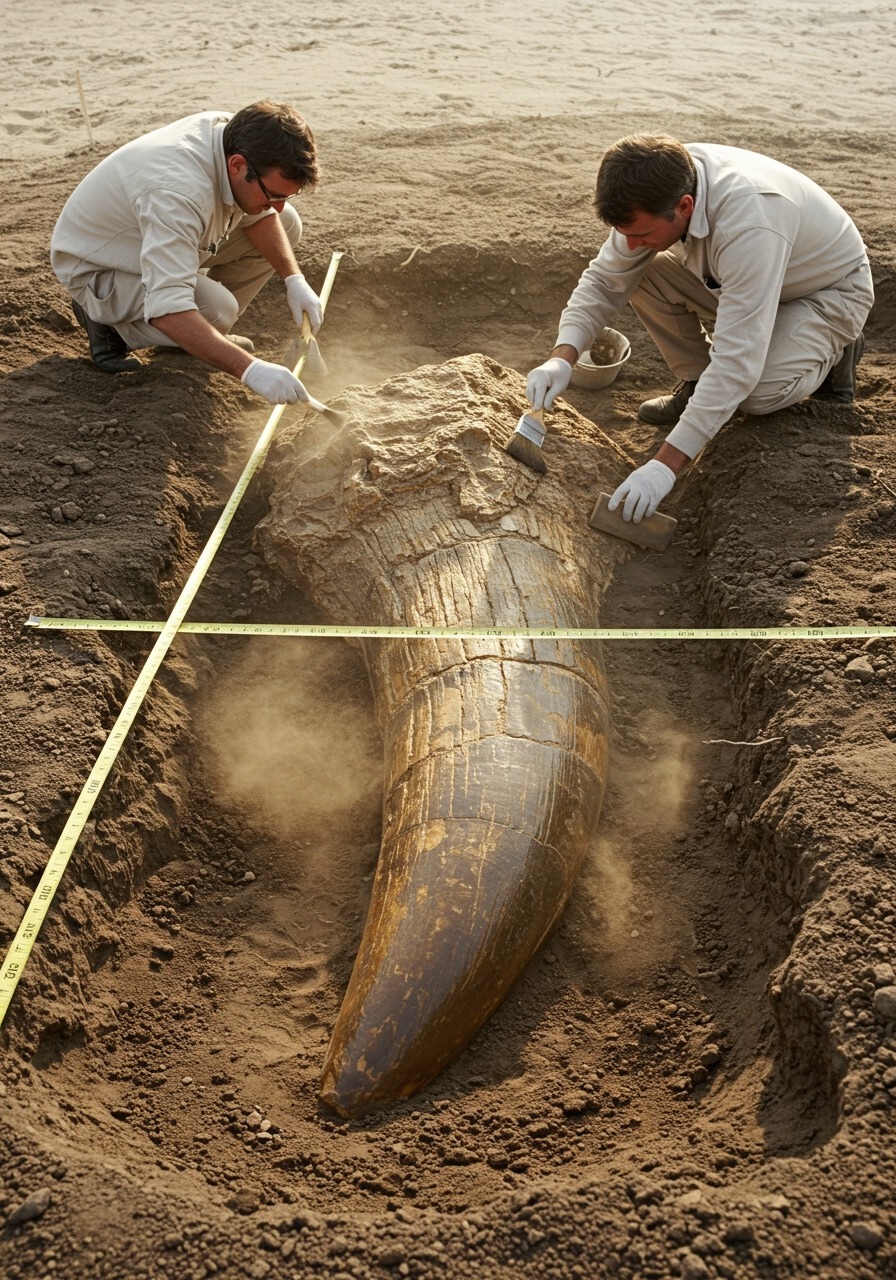
Archaeologists working in a remote desert site have made a discovery so astonishing that it is sparking fierce debate worldwide: a fossilized fang so massive it dwarfs the human body. Measuring longer than a person’s frame, the colossal tooth challenges everything we thought we knew about prehistoric life. Could it be the remnant of an undiscovered predator, a species lost to history, or even evidence that ancient myths of monstrous beasts were grounded in truth? Whatever the answer, this find forces science, history, and legend to collide in dramatic fashion.
A Fang Beyond Comprehension

The sheer size of the fossil has stunned experts. Unlike the teeth of known megafauna such as mammoths or saber-toothed cats, this fang is far larger, more elongated, and exhibits structural traits not yet classified in paleontological records. Its preservation suggests that it once belonged to a powerful predator, capable of dominating its ecosystem.
Initial measurements indicate the fang is longer than an average adult human and bears unique ridges, possibly designed to tear through flesh or crush bone. If confirmed, it could belong to a predator beyond any currently documented species—perhaps even rivaling the apex creatures of Earth’s deep past.
Science Versus Speculation
As scientists analyze the fossil, speculation has erupted across social media and news outlets. Some paleontologists cautiously propose that the fang could represent a previously unknown species from the late Cretaceous or earlier, preserved by unique desert conditions. Others suggest it may be a misidentified fragment of a known creature, distorted by fossilization.
Outside scientific circles, conspiracy theories are running wild. Claims abound that the fang is proof of suppressed knowledge—evidence of giants, monstrous predators, or even species erased from history books. Ancient myths of colossal beasts, from desert serpents to dragon-like predators, are being reexamined in light of the discovery.
Echoes of Myth and Legend

Throughout history, cultures across the globe have passed down stories of gigantic creatures dwelling in deserts, oceans, and mountains. The discovery of this fang reignites interest in whether such myths might preserve echoes of encounters with now-extinct megafauna. Could legends of monstrous beasts be exaggerated memories of real animals? Or does the fossil point to something even stranger—species we have yet to uncover, hidden deep within Earth’s forgotten chapters?
Rewriting the Story of Evolution
If the fang does indeed belong to a new species, its size and structure will force scientists to rethink evolutionary history. It could indicate that ecosystems once supported predators far larger and more formidable than currently believed. Such a revelation would not only expand the fossil record but also reshape our understanding of prehistoric food chains and survival strategies.
Conclusion
The colossal fang unearthed beneath desert sands is more than a fossil—it is a mystery that challenges science, history, and imagination alike. Whether it proves to be evidence of an undiscovered predator, a misidentified remnant, or a bridge between myth and reality, the find ensures one thing: our planet’s past still holds secrets too vast to ignore. As scientists continue their analysis, the world watches, captivated by the possibility that Earth once belonged to monsters beyond our wildest imagination.
